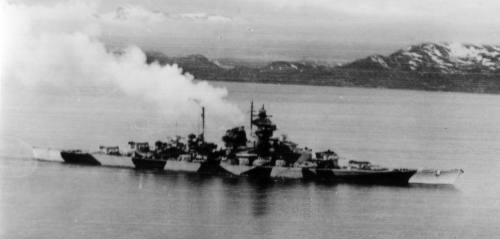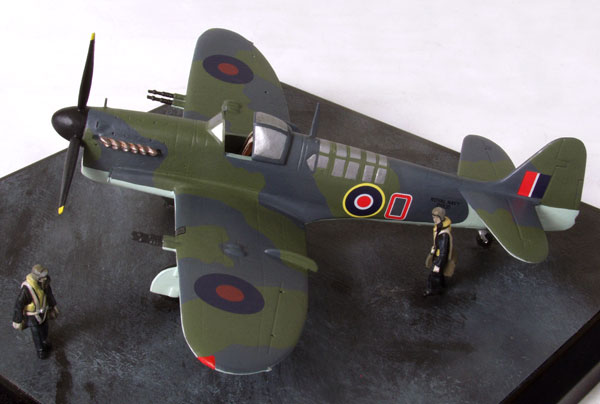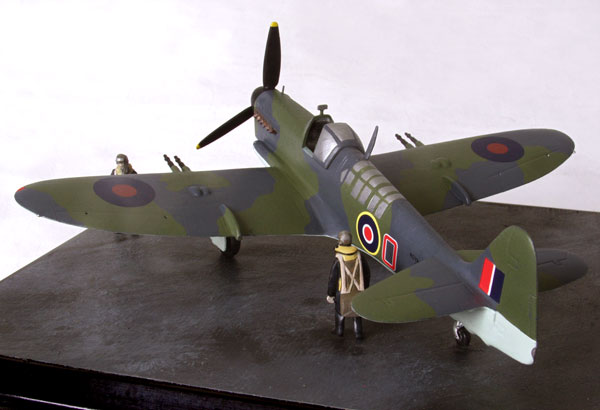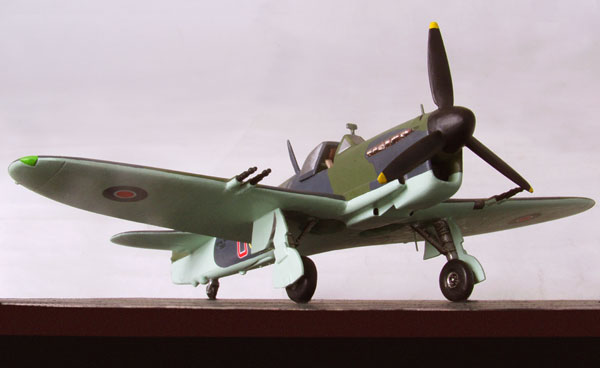Fairey Firefly MK I
Fairey Firefly Mk I Z1905 O 1771 Naval Air Squadron,
HMS Implacable October 1944
The origins of the Fairey Firefly monoplane were in Specifications N.8/39 and N.9/39 (a turreted version), issued at a time when the Admiralty had regained control of Royal Naval aviation. Fairey’s design was submitted in September 1939, and an order was placed with Faireys at Hayes for an initial 200 Firefly F.Mk.I aircraft in June 1940. This fulfilled Specification N.5/40 for a multi-purpose aircraft with strong fighter capabilities; it was powered by a Rolls-Royce Griffon engine of 1,730 hp. and armed with four 20 mm cannon, giving it a marked performance and weapons advantage over the Fulmar it replaced, and its distinctive fully-retractable Fairey-Youngman flaps contributed to the good low-speed performance necessary for carrier operations.
First prototype Fairey Firefly Z1826 was flown from the Great West aerodrome by Chris Staniland on 22 December 1941, with the shallower front canopy that was identified the early Mark Is; Z1828 carried out deck-landing trials on HMS Illustrious toward the end of 1942, and the first production Fairey Firefly I Z1830 flew in January 1943 and was delivered to the Navy on 4 March. During production of the Fairey Firefly Mark I – 872 in total, by the end of 1946 – a higher front canopy for improved pilot visibility became standard, and more powerful engines were introduced with the Griffon XII of 1990 hp. It was adapted for other roles, the Firefly FR.Mk.I and the Firefly NF.Mk.I being recognisable by their anti-shipping or anti-aircraft radar pods fitted below the engine cowling.
The Navy started a new numerical unit sequence when 1770 Naval Air Squadron was commissioned with Fireflies at Yeovilton on 10 September 1943 with 12 Fairey Firefly F Mk Is, working up in Scotland before joining HMS Indefatigable in May 1944. It was involved in operations against the German battleship Tirpitz along the Norwegian coast. 1771 NAS followed suit later in the year; after deck qualifications on Trumpeter in July and Ravager in August the squadron landed on Implacable at the end of September, joining the Home Fleet and taking part in its first operation, a reconnaissance to locate the Tirpitz, on 18 October. Succeeding operations often involved escorting Barracudas, and on the second of these on 26 October the Fireflies dived first to suppress the flak; one Firefly was shot down with the loss of the crew, Sub.Lts. R M Shaw and GM Smith, though the latter survived as a prisoner of war. On the following day the Fireflies attacked a destroyer and a U-boat in company; one aircraft was hit by return fire and crashed in to the sea with the loss of the crew, but U-1060 was damaged and subsequently ran aground, where it was destroyed by RAF Hudsons and Liberators. Shortly afterwards the Home Fleet returned to harbour, with 1771 landing at Hatston, but returning to Norwegian waters on Implacable on 5 December for operations that finished before Christmas. The squadron was once more shore-based in Scotland but embarked again on Implacable on 12 March 1945, sailing to the Far East, being involved in attacks on Truk in the Caroline Islands in June, and subsequently operations against the Japanese mainland. It disbanded at Nowra in Australia in October 1945.
The Fairey Firefly went through two distinct further stages of modification and development; the Mark IV had a much more streamlined nose housing its Griffon 74 of 2,100 hp., with radiators transferred to the wing roots, clipped wing tips and a revised vertical tail. The same airframe served for the AS.5 and AS.6 anti-submarine variant, and it was this version that saw service in the Korean conflict. Pilot training versions of both the I and the IV were produced with a raised second cockpit for the instructor taking the place of the observers’ station. The type’s third iteration had a semi-annular chin radiator intake, a larger “squared-off” vertical tail and a big “bubble” transparency replacing the framing over the Observers’ position. Originally intended as an anti-submarine aircraft, the Mk.7’s principal use was for training, and the U.8s were target drones. Many T.7s were also modified as U.9 drones.

Scale 1:72 Wingspan 7.4″ (188.4 mm)
Base size 7.71″ (196 mm) square (No. 5)
Weight not including base 12.5 ozs (357 grams) Limited edition of 25 only




